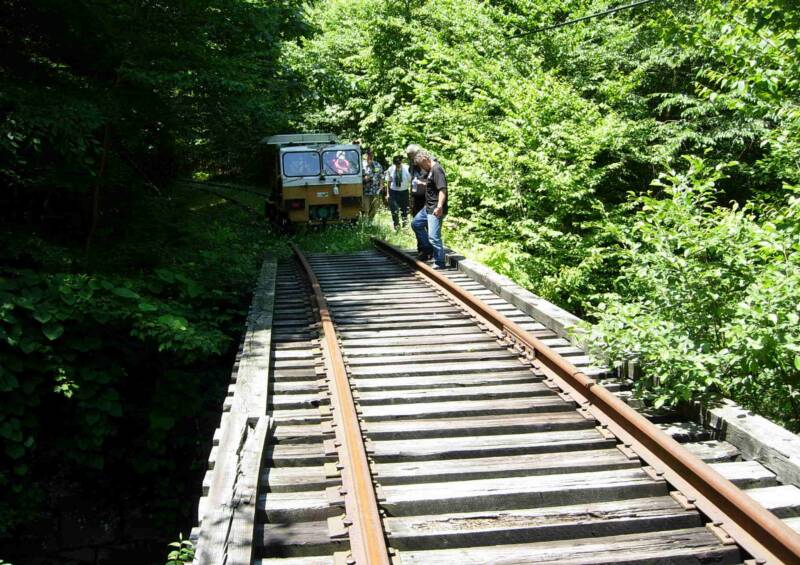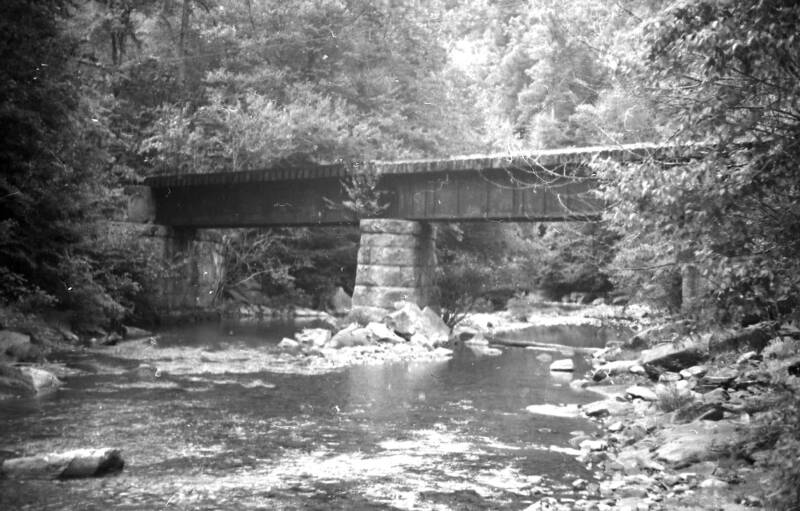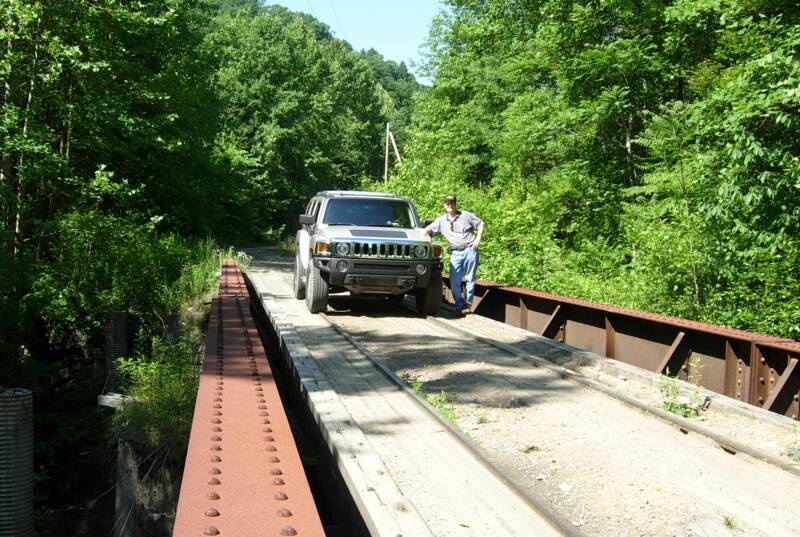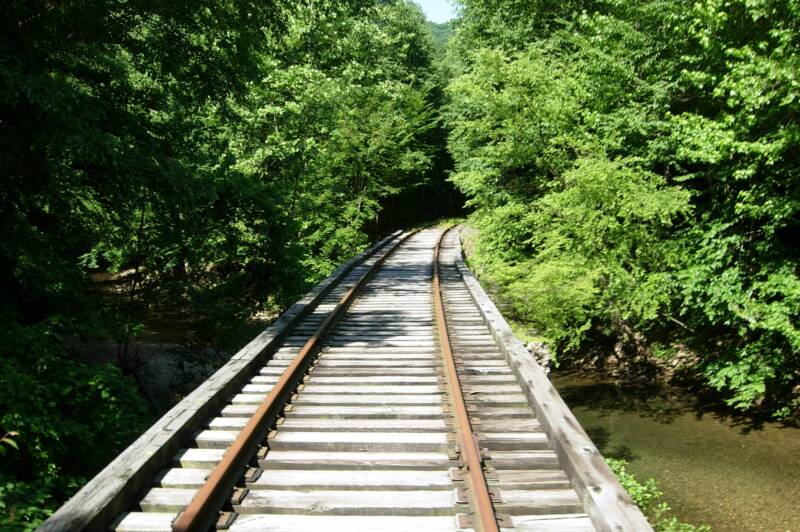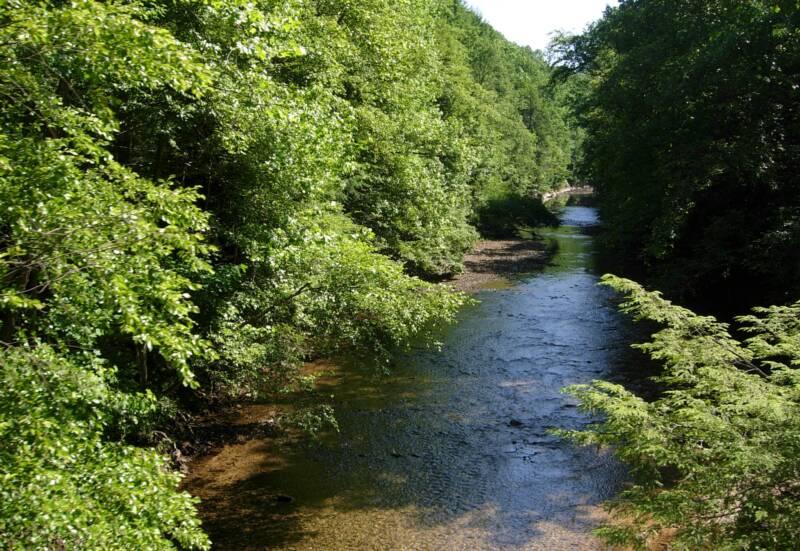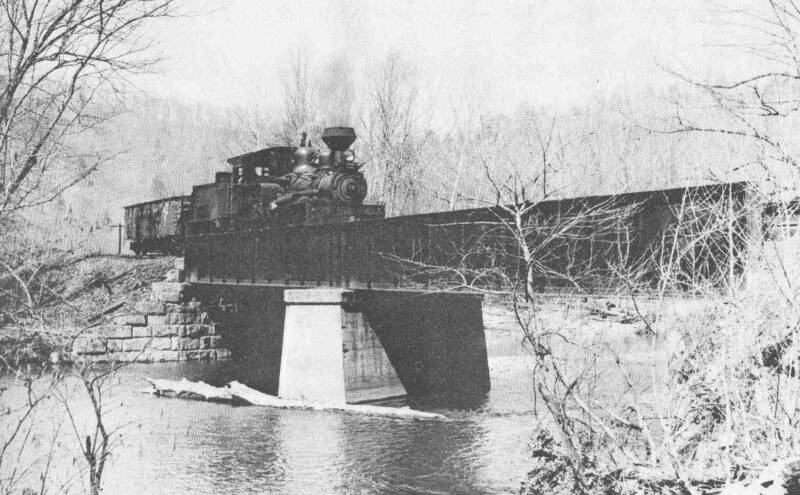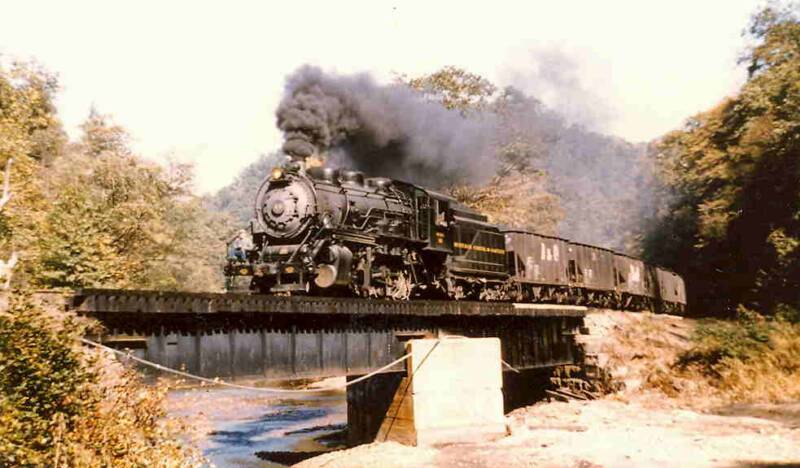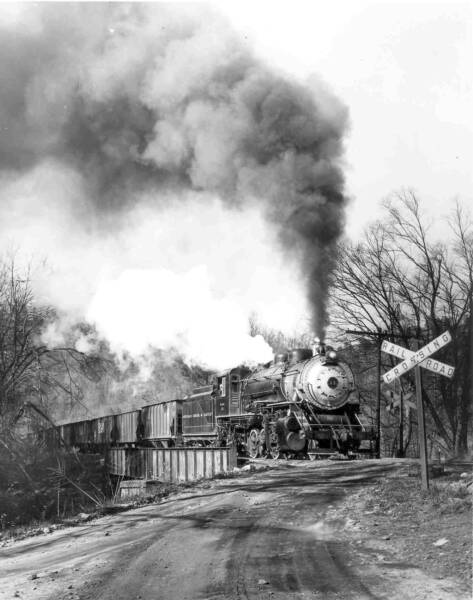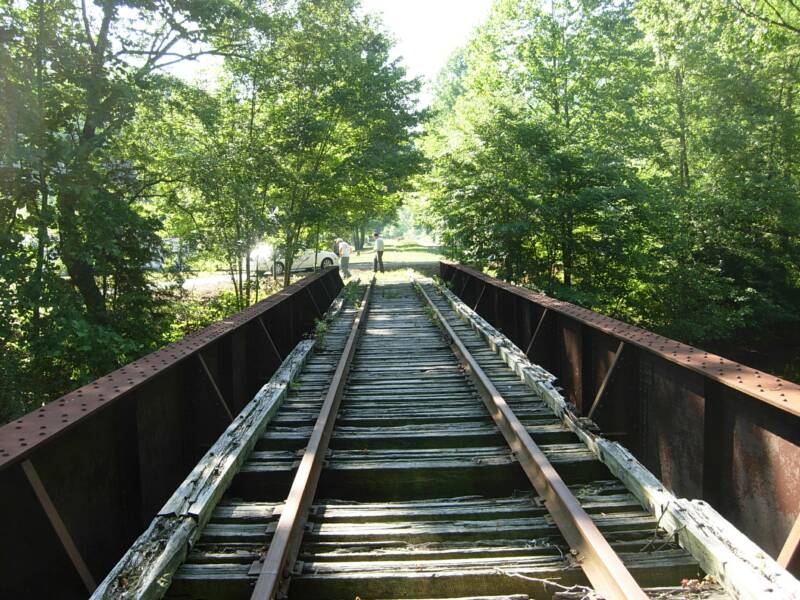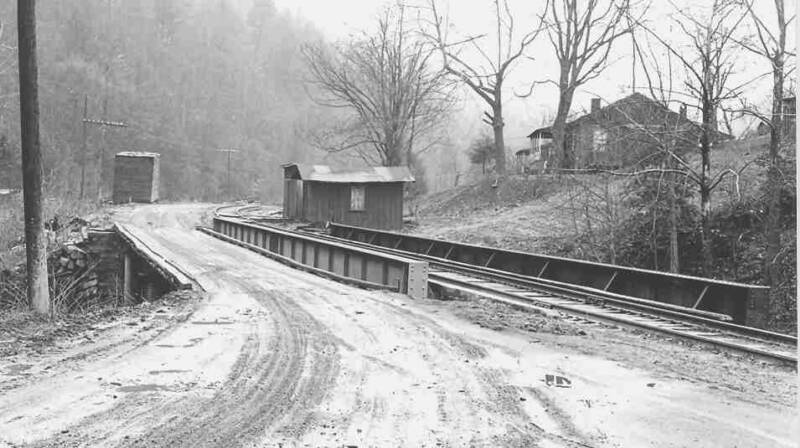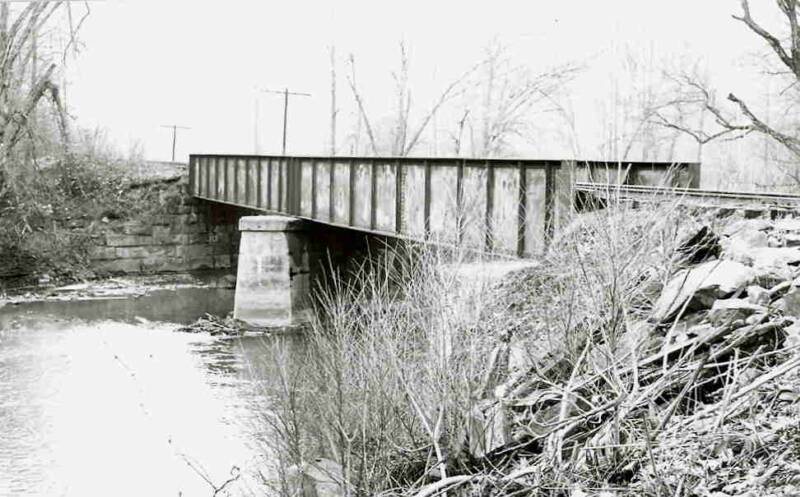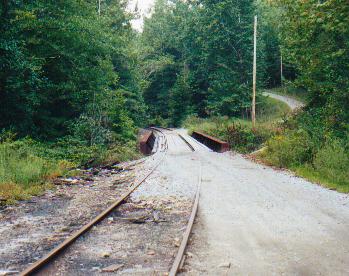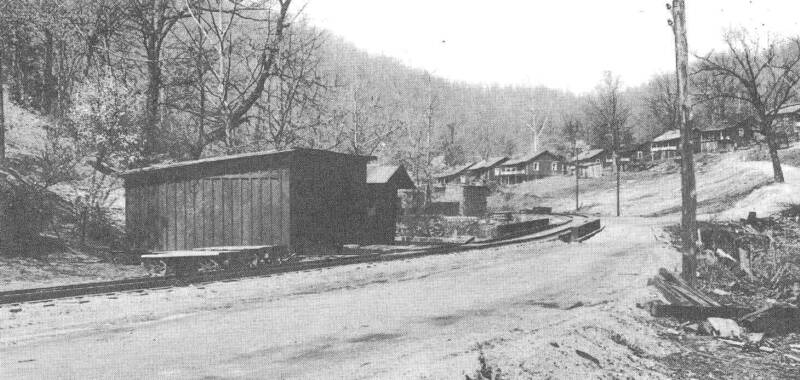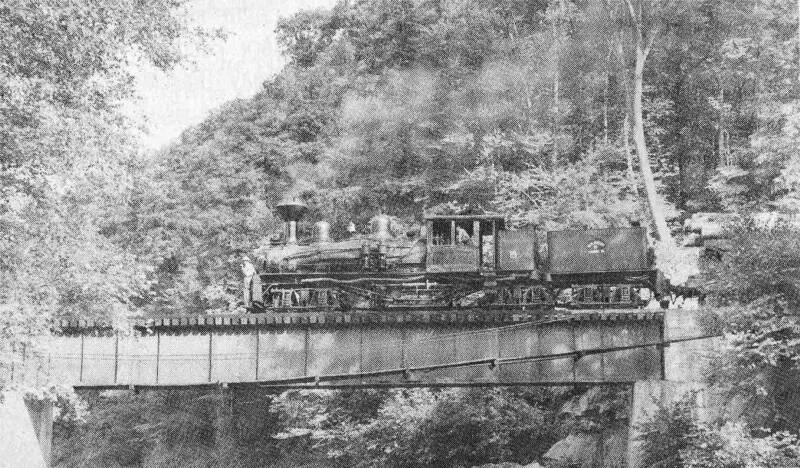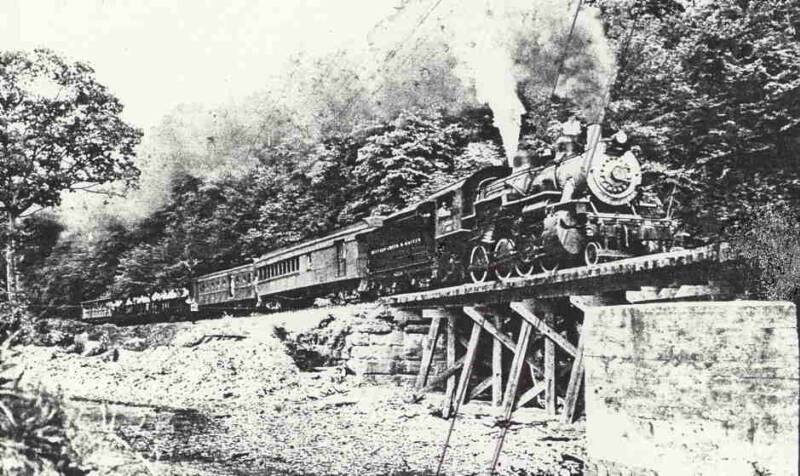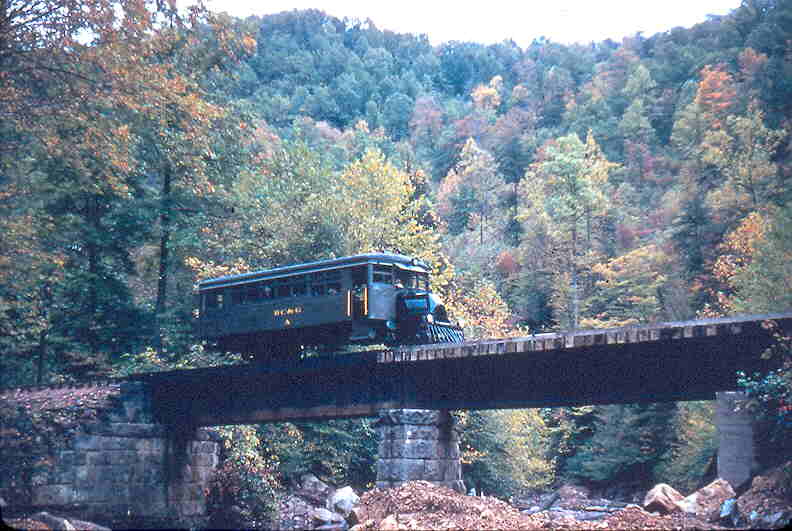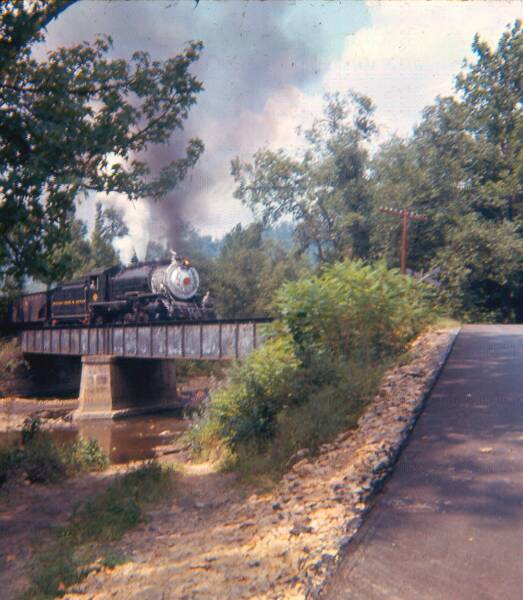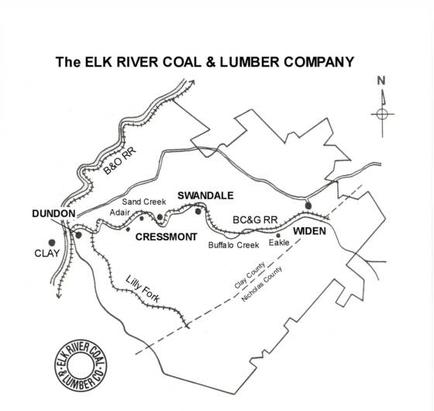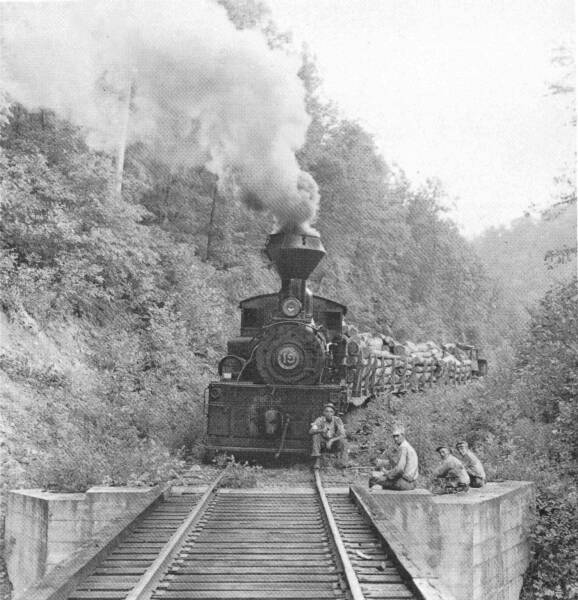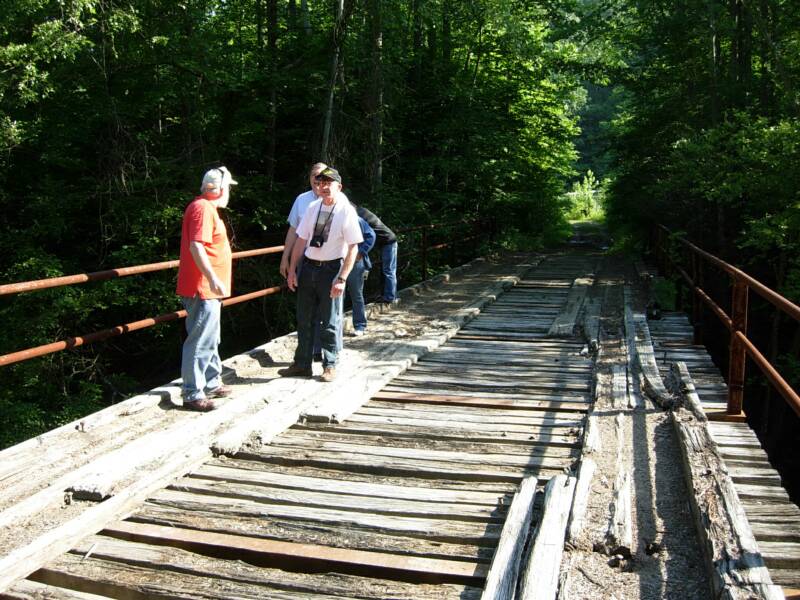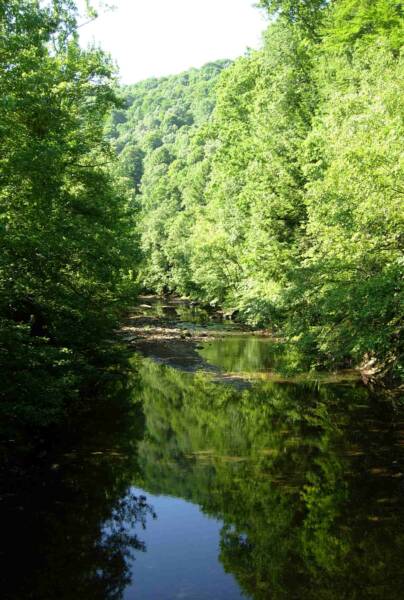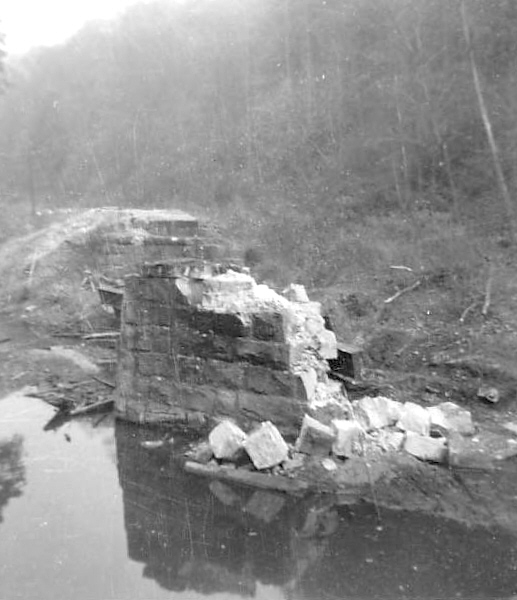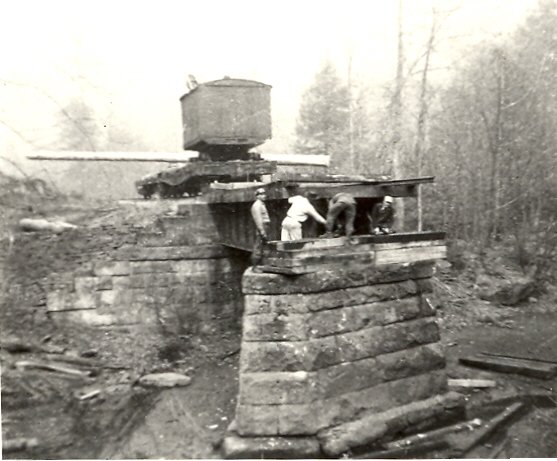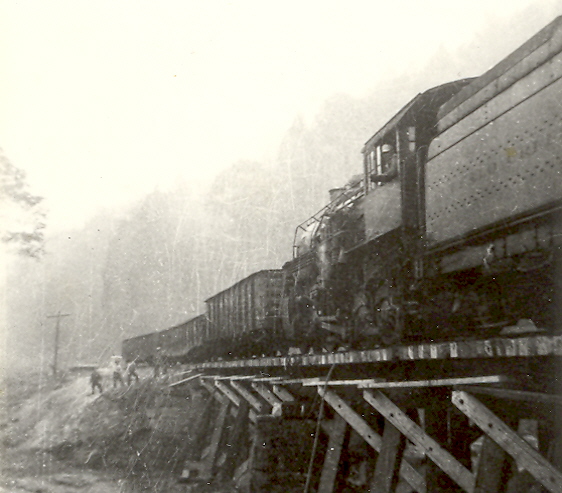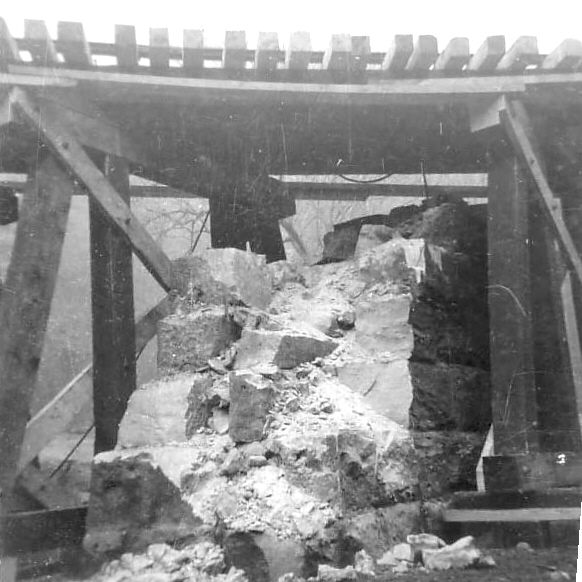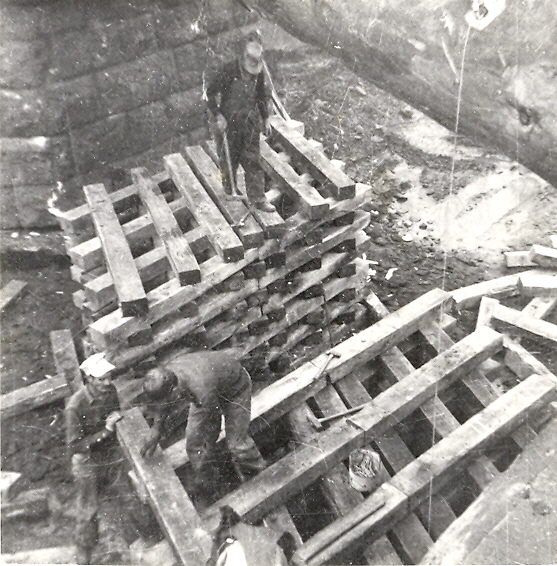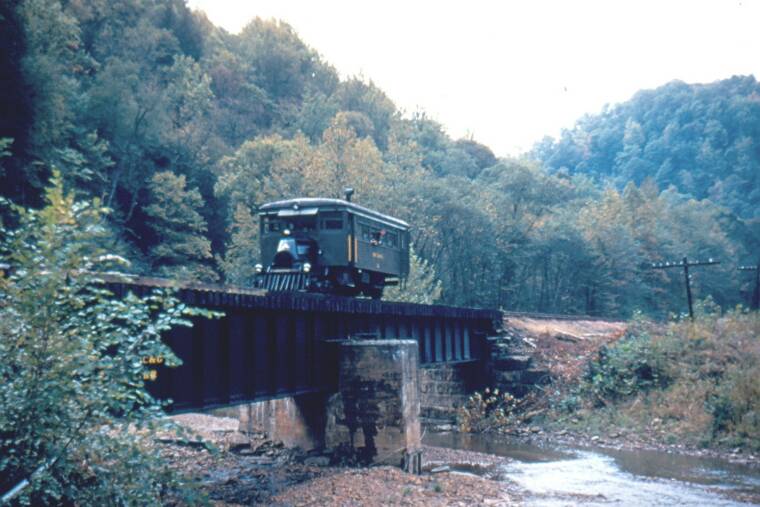Bob Slavy - circa 1974
This photo shows the temporary repairs to the Sand Fork Bridge. Repairs were not completed until April 1960, some eight years after the dynamiting! This is a fantrip crossing the temporary wood trestle. It appears the new concrete pier is in place. J.J. Mannix collection.
Bridges
The exact number of bridges on the BC&G probably depends on your definition but there was certainly a nice variety on the line. Some bridges crossed the Buffalo Creek itself while others spanned other streams. This section gives an overview of the five bridges for which there is reasonable documention. Some of the bridges were deep in the woods not accessible by road and so photos weren't taken during the time the railroad was in operation. The diagram to the right gives the approximate location of the bridges documented on this page.
According to Bobby Caruthers in 1993, the bridges were converted from timber to steel in the early 1920's. Mark Metz confirmed Bobby's recollection in January 2021 when he discovered an article in COAL REVIEW Magazine, Vol. 5, November 8, 1922, pg 17 which stated that six (6) steel bridges** were ordered by the ERC&L Co. from Phoenix Bridge company.
2. Sand Fork Bridge
At the place called Avoca not far from Dundon, the Lilly Fork logging branch headed off from the BC&G. There was a wye here where BC&G engines were turned on the trip back from Widen. The photo on the left is from Pg 33 of Warden's BC&G book and shows ERC&L Shay #19 waiting on the opposite side of the bridge for the BC&G main to clear. It appears to have a poured concrete abuptment. The photo above right was taken in 2007 standing at about the same spot.
The bridge is in pretty good condition since it hasn't been used for rail traffic since 1965, I don't believe. The railings were added for the safety of hikers. The clearing for the former trackage is visible in the trees.
1. Avoca Bridge 1 mile
2. Sand Fork Bridge 7 miles
3. Cressmont Bridge 8 miles
4. Swandale Bridge 10 miles
5. #4 Bridge 13 miles
3. Cressmont Bridge
4. Swandale Bridge
Brooks Stover - 2007
John Krause photo - date unknown
The Sand Fork plate girder bridge is an oft-photographed site on the BC&G. This was one of the two bridges dynamited in 1952 during the labor unrest. .
The center pillar was destroyed and replaced with a not-so-handsome concrete affair which clearly was not going to be taken out with another small dynamite charge!
Based on the 1918 ICC Bureau of Valuation Report, it appears the Sand Fork bridge is 142 feet in length.
Two photos Brooks Stover - June2007
In the photo above, taken in 2007, one of the unusual practices of the BC&G is seen, namely the lack of guard rails on bridges. None appear to have ever had them. This bridge received significant upgrades in the 1980s and so is in very good condition today.
John Krause photo - March 1957
The Cressmont thru plate bridge is just west of the oft-photographed Cressmont grade crossing, seen in the photo above. This a thru-girder bridge. I haven't seen reference in the literature about this bridge being damaged in the labor dispute so the poured center pylon was either part of the original design or simply an upgrade.
Based on the 1918 ICC report, this bridge is 118 feet long.
Brooks Stover - June 2007
Below is a view looking east toward the grade crossing. The dairy was to the left just beyond the road. The photo to the right is a view of the Buffalo Creek from the bridge.
Bill Price photo - November 1961
Jeff Madden photo
Jeff Madden photo - date unknown
Photo from 1964 KING PIN magazine, Mid Central Division NMRA
By the time the two photos below were taken, the highway bridge was gone completely and the road shared the bridge with the rails. This would certainly be an interesting detail on a layout.
Brooks Stover - June 2007
Photographer and date unknown
The Avoca bridge was of steel girder construction like most on the line. This photo, the only one I've seen from this vantage point, appeared in the January 1976 issue of RAIL CLASSICS
John Krause photo
Miles from Dundon
5. Bridge #4 (Robinson Bridge)
Richard Manning collection - October 1960
This is a view of the Buffalo Creek from the Sand Fork bridge. When the mine was in operation, the creek was black in color due to coal waste in the water.
Source Unknown
The second bridge dynamited in the 1952 labor unrest is most frequently referred to simply as Bridge #4. One source, the 1960 railfan trip material prepared by the Huntington Chapter of the NRHS, referred to is as Robinson Bridge.
This bridge was not fully repaired until April 23, 1960 according to the NRHS material cited above.
To the right is one of the best photos of this bridge. Below is one taken by Bob Slavy around 1974 during one of his many visits to the Majestic Mining operation. Bob credits his Jeep and lots of luck for getting this picture.
Brooks Stover - June 2007
Dynamite on the Cressmont Bridge
Cody Burdette tells that a large charge of dynamite was found on the center pier of the Cressmont Bridge during the labor unrest in the early 1950's. Fortunately it was discovered before they set it off. It was after this event that small guard shacks were constructed at each of the bridges. Cody recalls that as a high school student, he used to talk with the fellow who manned the shack at the Swandale bridge.
Jerrold Murphy has provided some great insight into these two photos of the Swandale bridge. The upper picture, which is looking from the direction of the company store, shows the area that would have been right in what was considered the town of Swandale. This photo was taken after the sale of the ERC&L as lumber (see stack to left of road in distance) was not stacked here when the ERC&L was in control. Notice, too, that there is a motor vehicle bridge running right next to the railroad bridge. Compare this with color photo below. Jerrold says the house on the right is where his grandfather, Curt Murphy, lived.
Further, Jerrold says the small structure just across the bridge may very well be one of the guard shacks built during the labor unrest in the 50s. In any case, it is in the location where the guard shack was. He recalls that there was a fire or stove in the shack and guys gathered there for conversation every evening. The "guards" carried large 5 cell flashlights.
The lower photo, taken at about the same time, is looking in the opposite direction, toward the company store and mill. The shed nearest the camera housed a speeder and the guard shack is just behind it. By enlarging the photo you can see that a street runs up the hill to the right across the hill. Jerrold says the hill was known as "May's Hill", believed to be named after an early superintendent of the mill.
John Brown photo - 1963
Here is a wonderful and rare color photo by John Brown of the Cressmont bridge. For the modeler it provides a great view of the cut stone pillar, looking all the world like a Chooch item! Note the crew member riding outside on the pilot as was so often done, and the striking similarity to the Bill Price photo above right.
This is the way Bridge #4 looked during a speeder trip in June 2007.
1. Avoca Bridge
1
2
3
4
5
Brooks Stover - June 2007
Making Bridge Repairs
Some of these photos and others are available at www.rides.webshots.com/album/17429559pYsDJVtNpa
This undated photo from the Al Chione collection is interesting in that is shows the lettering "BC&G RR" in yellow on the steel girder just behind the tree in the lower left corner. The lettering appears to be freshly painted, perhaps part of a spiffing up for a railfan trip. It is the only photo know in which such lettering appears.
Al Chione collection
These photos are from various sources and show repairs being made to the Robinson Bridge, I believe. The photo in the lower right is particularly interesting in that it shows the American Log Loader in MOW service!
** It's not clear what the sixth bridge was
1/3/21
